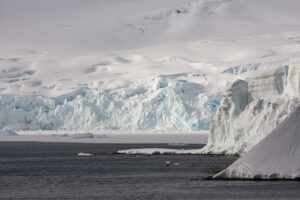Big fish stories are not only real — they might become more common in a warming world.
Across the globe, sightings of monstrously large fish have seemed to increase in recent years. Last year, California kayakers spotted a three-metre-long sunfish nearly as long as the biggest specimen ever recorded.
Other reports from the last 18 months include a 300-kilo stingray off the coast of Cambodia, a 190-kilo lake sturgeon caught in the Detroit River, and even a 45-kilo opah in Oregon. And a 30-kilo hybrid of leather carp and koi — a kind of giant goldfish — made headlines this week after an angler spent 25 minutes reeling it in.

An angler reels in one the world’s largest goldfish from a lake near Champagne, France. Photo: still from video
Climate change has caused massive changes in the migration patterns of fish. That causes all of them — including the monstrous variety — to show up in unexpected places. (That opah fish in Oregon, for example, is typically only found in tropical waters.)
And some research suggests that the increased temperatures might result in larger individuals.
Changing migration patterns
Just a few years ago, scientists found that the ocean has taken the brunt of climate change.
In fact, the earth’s oceans have absorbed more than 90 percent of the heat gained by the planet between 1971 and 2010. That’s the finding of a University of Oxford study that looked at ocean temperature change between 1871 and 2017.
That has many negative impacts on the ocean, including the migration patterns of fish.
The fish “are relocating to new environments,” Francisco Werner, director of scientific programs at National Oceanic and Atmospheric Administration Fisheries, told The Washington Post. He said the ocean’s fishes are “trying to maintain some optimum temperatures and preferred temperature ranges that they like.”
That means many fish populations have started moving toward the poles, with their cooler waters.
A confused fishery
Warming waters may affect some species positively while cooking others beyond their ability to adapt.
That’s evident from the Maine lobster boom, which was “thriving thanks to climate change” in Dec. 2021. Just a month after that CBS story, UPI reported that “climate change could end” the state’s explosion in lobster populations.
A study from Australia found that a warming planet might also boost fish size.
“As time passes and the temperature continues to influence organisms, estuaries could end up having individuals that have a higher reproductive rate and lower mortality rates, leading to a population with fast-growing predator fish,” according to the study.
In other words, we might see more monster fish in the immediate future. But without human action, a hot disaster continues to threaten the earth’s oceans.






